Are you wondering which martial arts, Jiu Jitsu or Taekwondo is better for you?
Read on to understand their distinct features and uncover the differences between them so that you get a much better understanding of both.
Discover how this dynamic duo of revered combat sports can help you become a better fighter, whether in the ring, in self-defense situations, or to stay fit.

Historical Differences of Jiu Jitsu vs Taekwondo
Taekwondo and jiu-jitsu are two completely different martial arts, with differences in their striking, grappling, and self-defense techniques.
Both disciplines have national and international sports competitions and governing bodies like the Gracie International Jiu-Jitsu Federation (GIJJF) or the World Taekwondo Federation (WTF).
This article will provide an overview of these two martial arts and what sets them apart from one another, so you can decide which one might be right for you.
We will discuss various techniques used in each discipline as well as what makes them unique from one another.
Finally, we will provide tips for choosing a school to practice that best fits your needs.
Japanese Jiu-Jitsu Grappling
Jiu-Jitsu is a Japanese martial art (coming from Japanese Jiu-Jitsu) that has been practiced for centuries. Following the teachings of Jiu-Jitsu master Jigoro Kano, it is a grappling martial art, which means it involves the use of throws and joint locks to take down an opponent.
Jiu-Jitsu practitioners usually wear kimonos and learn techniques such as sweeps, submissions, choke holds, and throws.
The most famous Jiu-Jitsu school was founded by Carlos and Hélio Gracie in Brazil in 1925. This style of Jiu Jitsu became known as Brazilian Jiu Jitsu BJJ.
History of Taekwondo
Taekwondo is a Korean martial art that, today, is practiced all over the world. It was introduced by a Korean General named Choi Hong Hi following the Korean War. It was greatly influenced by China’s karate and taekkyeon (Korean traditional martial art). Over time, it developed into a modern martial art and an Olympic sport.
The fundamental differences between Taekwondo and Jiu-jitsu are in their techniques and focus. Taekwondo utilizes fast and powerful kicks, blocks, and punches, often from a distance. It emphasizes speed, agility, and balance.
Both martial arts have distinct advantages and are highly effective in their ways. It’s up to the practitioner to choose the one that best suits their physical abilities and personal preferences.
Pro tip: Before deciding on practicing martial art, do thorough research, participate in trial classes if possible, and consult with an experienced practitioner.
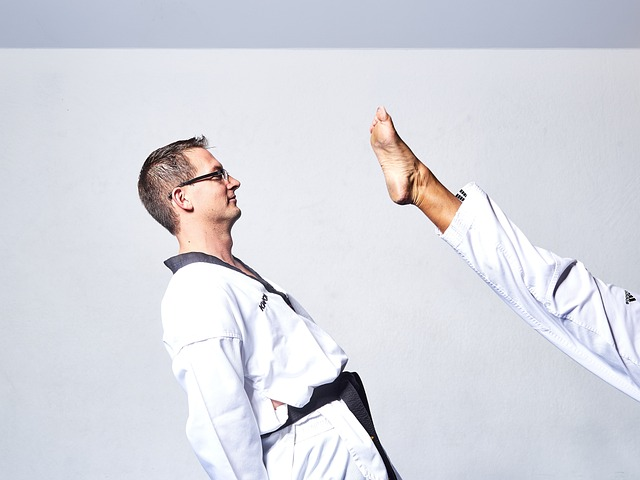
Techniques and Strategies of Jiu Jitsu and Taekwondo
Jiu-Jitsu and taekwondo rely on several different techniques and strategies to achieve victory in combat.
Techniques Used in Taekwondo
Taekwondo is a martial art that focuses on fast, powerful kicks. Let’s discuss the primary techniques used in Taekwondo:
- Blocks: Taekwondo practitioners use various types of blocks to deflect incoming attacks. Some common blocks include high, mid-blocks, inner, and outer blocks.
- Strikes: Taekwondo practitioners use a range of strikes, including punches, knife-hand strikes, and ridge-hand strikes, to immobilize their opponents and create openings for counter-attacks.
- Kicks: Kicking techniques are the hallmark of Taekwondo. The martial art makes use of a range of kicks, including front kicks, side kicks, roundhouse kicks, back kicks, and hook kicks.
Techniques Used in Brazilian Jiu-Jitsu
Brazilian JiuJitsu and Taekwondo have vastly unique techniques and training methods. While both arts focus on self-defense, they differ in execution, mindset, and competition rules.
Here are some of the grappling techniques used in Brazilian JiuJitsu:
- Guard: When an opponent is on top of you, the guard position allows you to use your legs to control their body movements and defend yourself.
- Mount: In this position, you are on top of your opponent and can strike or submit them by locking joints, a rear naked choke, or a guillotine choke.
- Side Control: This is a top position where you control your opponent’s body using your body weight and pressure.
Jiu-jitsu practitioners employ techniques such as control holds to maintain position, while striking arts (such as Taekwondo) focus on building power through quick motions to knock out their opponents quickly with powerful strikes like roundhouse kicks or head kicks.
Different Philosophies
The differences in techniques between Brazilian Jiu-Jitsu and Taekwondo highlight their distinct philosophies and principles of combat.
Both utilize joint locks for submissions and throws for take-downs. Both include basic punches, elbows, knee strikes, and grappling moves such as arm bars, shoulder locks, and guillotine chokes.
Additionally, Taekwondo fighters can learn defensive strategies such as blocking or rolling away from incoming strikes using their feet or hands for defense rather than relying heavily on submission throwing or ground fighting tactics like many Jiu-Jitsu schools teach today’s students.
Finally, Taekwondo practitioners generally specialize in either traditional patterns (“kata“) or taekwondo competitions rather than self-defense scenarios like those encountered when practicing Jiu Jitsu schools.
Instructions of the taekwondo school usually focus on survival skills incorporating striking arts and other martial arts into one comprehensive self-defense system designed for real-world applications such as street fights or unarmed combat encounters rarely experienced within controlled tournament bouts.
Similar Principles Apply
Though each style has different focus areas—striking vs. submission— some of the same principles remain constant across all forms of martial arts. They are
- respect
- technique over brute force
- controlling emotions during the physical confrontation
- judgment over emotion
- strategy over strength
- use superior speed not only while kicking but also while surrounding an opponent with maneuvers such as side steps
Neither style is necessarily better than the other – both have strengths that could be leveraged to give someone an advantage during an altercation—it just depends on which technique suits your needs best!

Which Has More Benefits – Jiu Jitsu or Taekwondo?
Jiu-Jitsu and Taekwondo offer a variety of benefits for practitioners, whether it is for self-defense and personal protection, improved physical conditioning, or training for competition.
Both Jiu Jitsu and Taekwondo provide great benefits for practitioners both inside the practice room as well as outside.
Students learn unarmed combat and self-defense systems from which they can draw whenever they feel threatened or vulnerable, either on the street or in other potentially dangerous situations.
This gives them a huge advantage over someone without any fighting technique, increasing their chances of survival in dangerous situations.
Mental Benefits Of Brazilian Jiu-Jitsu
Regular practice of Brazilian JiuJitsu offers numerous physical and mental benefits, including:
- Improved flexibility and balance
- Increased strength and endurance
- Improved cardiovascular health
- Better body awareness and control
- Reduced stress and anxiety
- Improved self-confidence and self-esteem
- Positive impact on mental health
Learn How To Choke And Hold in BJJ
Jiu-Jitsu is a martial art from Brazil and one of the world’s most popular grappling martial arts, focused on ground combat.
It is also one of the few martial arts that teaches students to subdue or immobilize an adversary without inflicting serious injury.
Jiu-Jitsu teaches practitioners how to use leverage and proper technique with an opponent’s momentum against him or her to take them down.
The Gracie family developed this style over time, becoming the most popular school of Jiu-Jitsu today, with players competing in MMA competitions worldwide.
Students will learn various techniques, including joint locks and choke holds; they can practice these techniques in classes or private sessions with certified black belt instructors.
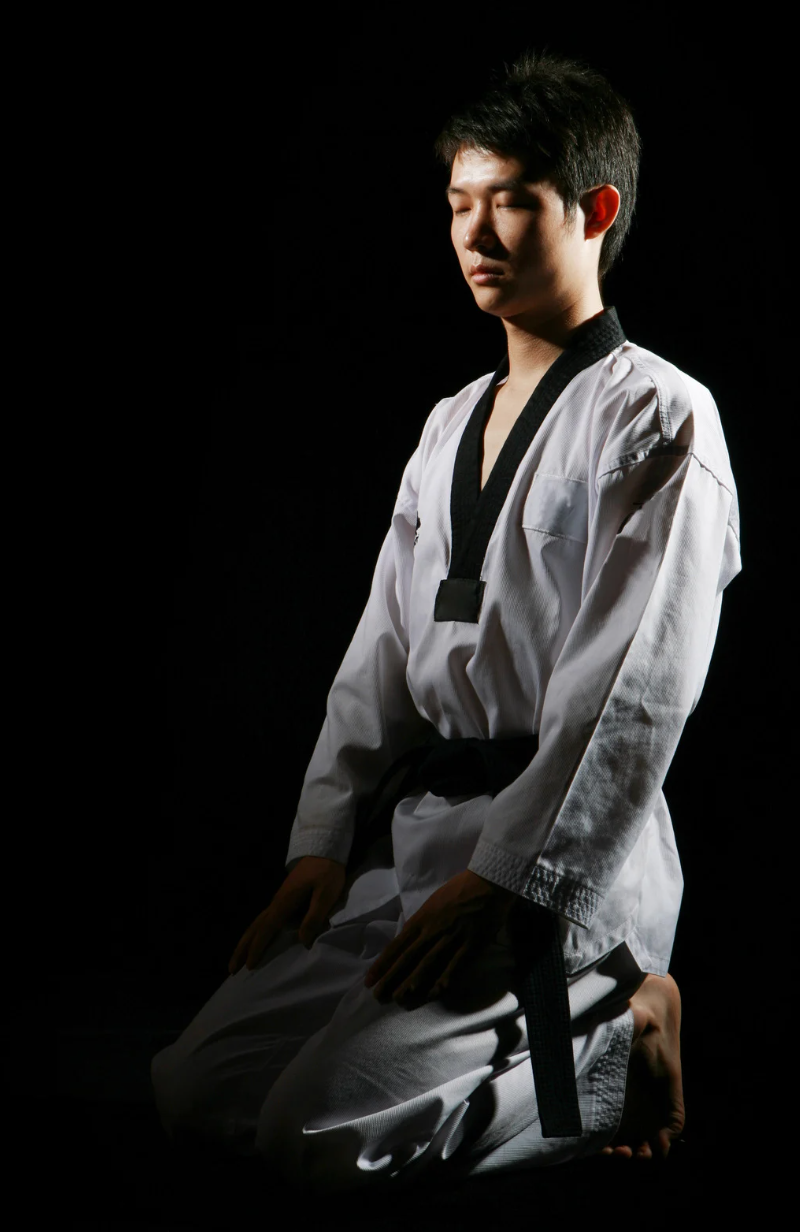
Incredibly Flexible Body With Taekwondo
Taekwondo is known for its high kicks, fast and dynamic movements, and emphasis on self-defense.
Here are a few benefits of practicing Taekwondo:
- Improves physical fitness: Taekwondo practitioners develop flexibility, speed, strength, and agility through rigorous training and conditioning.
- Enhances mental discipline: The study of Taekwondo instills discipline, focus, and self-control and helps practitioners develop mental toughness and resilience.
- Boosts self-confidence: Through setting and achieving goals, facing challenges in a supportive environment, and developing abilities, Taekwondo can increase self-esteem and confidence.
- Develops self-defense skills: Taekwondo is an effective tool for learning self-defense and self-protection techniques that can be used in real-life situations.
- Forms a community: Taekwondo builds camaraderie and connection as practitioners come together to support and learn from one another.
While both martial arts offer unique benefits, Taekwondo can provide a dynamic, empowering, and holistic approach to fitness, mental discipline, and self-defense.
The Fundamental Differences Between Jiu-Jitsu and Taekwondo
Jiu-Jitsu and Taekwondo are martial arts that have developed over many centuries. While both martial arts offer a way to defend yourself from an attacker, they utilize different movements and techniques.
Knowing the key differences between Jiu-Jitsu and Taekwondo will help you decide which martial art you want.
Jiu-Jitsu Promotes Self-Defense (Most Of The Time)
Jiu-Jitsu is considered a grappling martial art and promotes self-defense against attacks by using joint locks, chokeholds, throws, sweeps, and other moves for submission or positional advantage. Jiu Jitsu practitioners are usually proficient in ground fighting skills and striking techniques.
The main purpose of Jiu-Jitsu is to bring the fight to the ground, where opponents can be put in positions where they have no ability to fight back. This requires great strength, agility, and a technique that can only be obtained through practice and dedication.
All throws involve movement rather than power, making jiu-jitsu suitable for practitioners of all ages and sizes.
Jiu-jitsu remains an unarmed combat system enabling contestants or fighters within specific rulesets, such as No Gi Jiu-Jitsu competitions events within Brazilian Jiu-Jistu federations worldwide, such as IBJJF, with their belt ranking system.
The Jiu-Jitsu community worldwide is growing fast, and more and more people are hungry for that BJJ black belt.
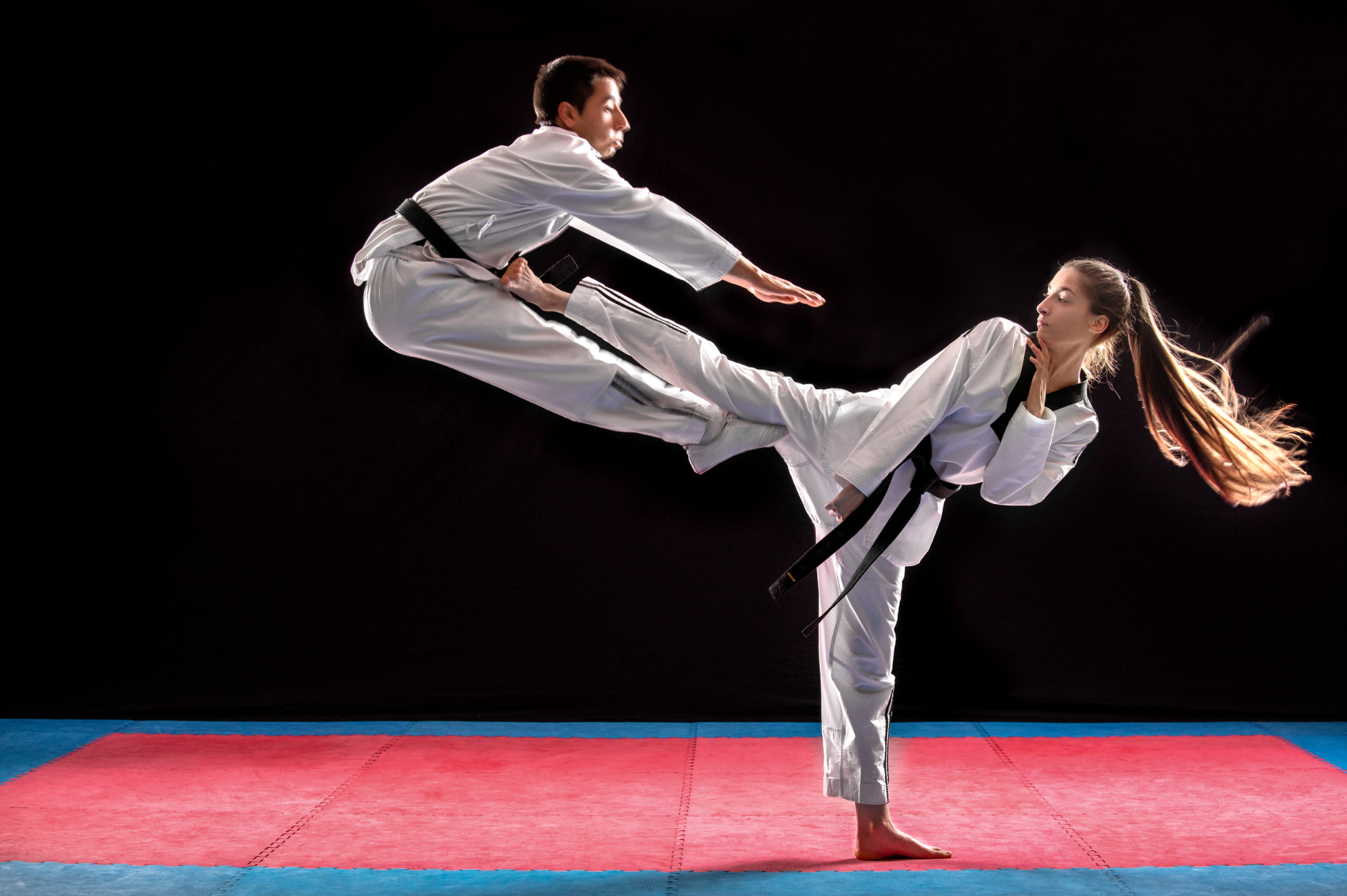
Heavy Kicking Taekwondo
Taekwondo focuses mainly on kicking techniques and their variations.
Taekwondo consists of powerful taekwondo kicks such as roundhouse kicks, spinning kicks, jumping kicks, jumping spin kicks, etc., punches, and blocks, along with forms called poomsae (practiced solo) for defensive and offensive maneuvers in self-defense scenarios or competitions.
Strikes are delivered with incredible speed using actions from stepping side-to-side (effusing energy), spinning kicks (where energy is multiplied) along with proper steps/strides forward & backward as needed to increase power from stances generated from correct body posture (known as dan-gun).
All kicking must come from correct stances for power & accuracy, known as “cheosohs” (low zercher squat positions), maboos ohs (long horse stance), or junbishin ohs (front left/right stance).
Taekwondo also studies pressure points known as sulbi lip sool, giving it a unique edge when used properly.
The World Taekwondo Federation regulates competition rules & safety regulations, making it an official Olympic sport in 2000.
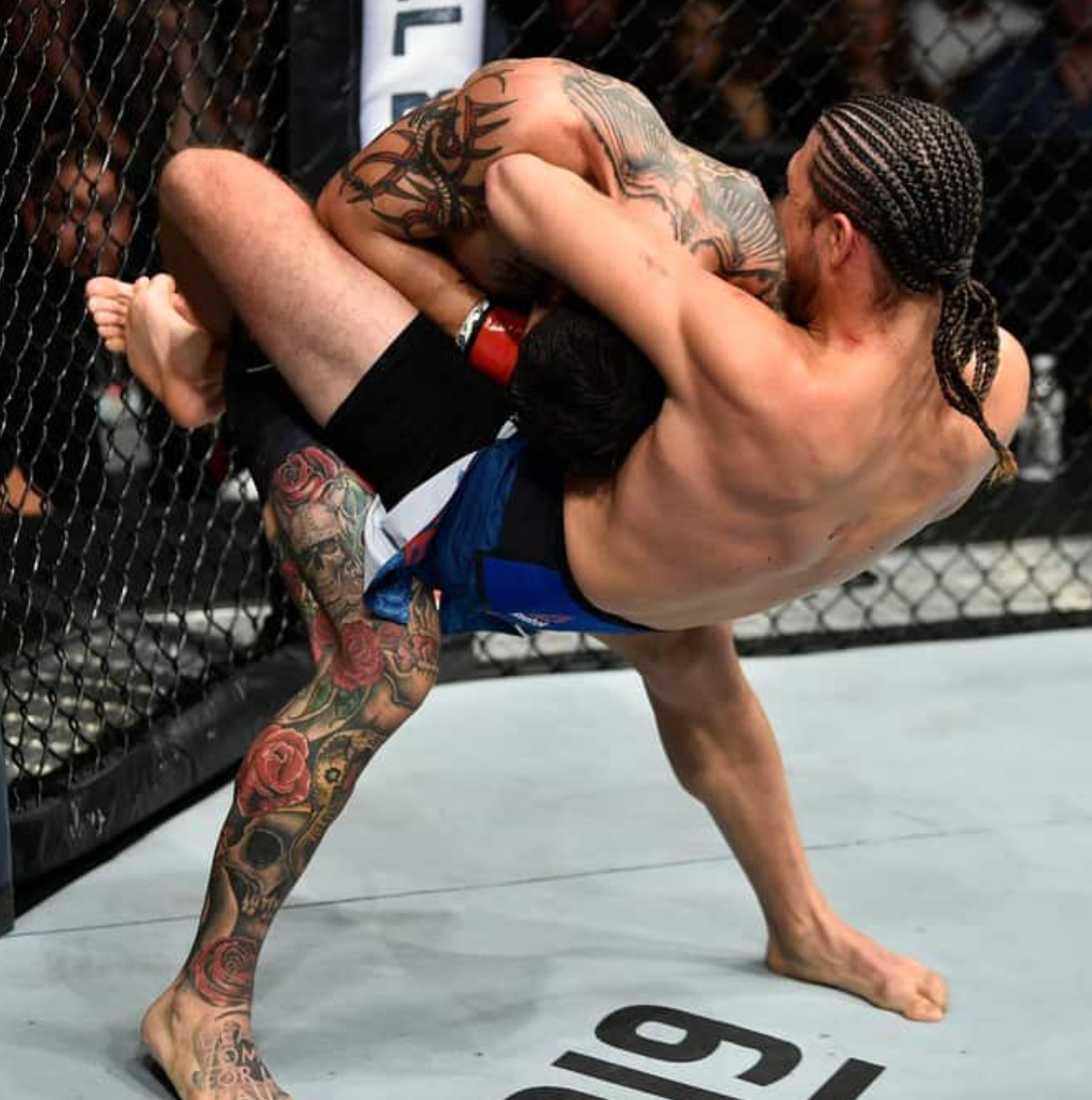
Brazilian Jiu-Jitsu and Its Impact on Martial Arts
Brazilian Jiu-Jitsu has tremendously impacted martial arts over the past three decades. The art was developed in Brazil by Carlos and Helio Gracie, members of the prominent Gracie family and founders of Gracie Jiu-Jitsu.
Today, it is among the most popular martial arts on earth and is taught in virtually every country.
It emphasizes technique over strength; thus, even smaller opponents can gain an advantage by out-thinking their opponent and using angles to gain leverage rather than trying to overpower them. Moreover, some of its moves go beyond traditional grappling arts such as judo and wrestling.
BJJ has also impacted other striking-style martial arts, such as muay Thai and taekwondo, by introducing new self-defense techniques that work well against punches, kicks, and basic takedowns.
In addition, BJJ provides practitioners with invaluable experience in dealing with various dangerous situations that may arise when dealing with unarmed combat or street fights.
By teaching individuals how to take a situation from standing to the ground safely and securely and utilizing various ground strategies against an attacker, BJJ adds an extra layer of self-defense skill sets not found in many other traditional martial arts like kung fu or Japanese Jujitsu.
Because it rewards strategic thinking rather than raw physical power against opponents regardless of size, BJJ has become a staple at all levels of competition in mixed martial arts (MMA) bouts around the globe.
Popularity of Jiu Jitsu and Taekwondo
Jiu-Jitsu and Taekwondo are two of the most popular martial arts globally, with practitioners worldwide. While each has its unique history, styles, and techniques, there are certain similarities between them, making them very attractive to those looking to learn self-defense or how to fight.
This commitment has made Jiu-Jitsu extremely popular with students of all ages for recreational purposes and its spiritual benefits.
The top Jiu-Jitsu practitioners have achieved legendary status among martial arts aficionados worldwide through victories in some of the most high-profile Mixed Martial Arts competitions, such as UFC or PRIDE.
Taekwondo is a Korean military-style martial art focused mainly on kicking techniques broadly adopted from ancient Chinese strategies.
The impressive speed and power require an enormous amount of training that many younger practitioners enjoy putting themselves through before showing off their abilities at tournaments sponsored by national organizations such as South Korea’s World Taekwondo Federation or international organizations such as the International Taekwon-Do Federation (ITF) or Tae Kwon Do (WTF).
Conclusion: Jiu Jitsu vs Taekwondo – Which is Better?
Both Jiu Jitsu and Taekwondo provide different experiences, advantages, and risks. It ultimately comes down to personal preference when deciding which martial art to pursue.
Ground Fighting – Jiu Jitsu
Generally, those looking to gain ground fighting skills may be drawn toward Jiu-Jitsu, while those looking for a more traditional striking art might be attracted to Taekwondo.
Jiu-Jitsu is a highly effective way to learn self-defense and ground fighting.
It is also an excellent way to develop Strength of Mind, Flexibility of Body, and Courage of Heart for physical fitness and the challenge of sparring against a live opponent.
Striking Martial Arts – Taekwondo
On the other hand, Taekwondo focuses heavily on developing speed, power, agility, and reflexes through extensive kicking drills and sparring; therefore making it useful for competition or self-defense in a standing position.
When comparing Jiu Jitsu vs. Taekwondo, both could offer attributes depending on the student’s interests.
Everyone interested in learning martial arts should thoroughly research each martial art when deciding which best suits their needs.
No matter what style you decide is right for you should always remember that dedication pays off!
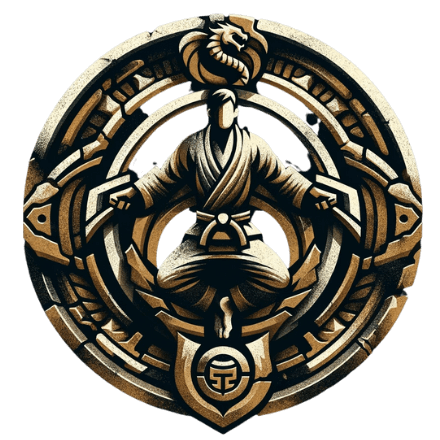
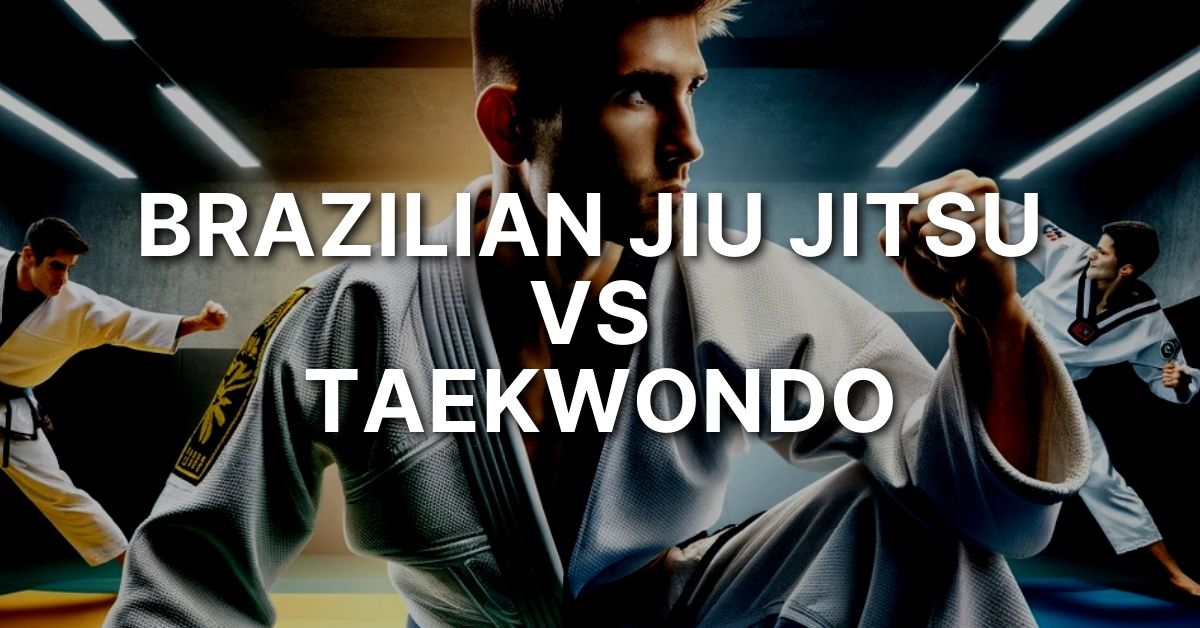
0 Comments